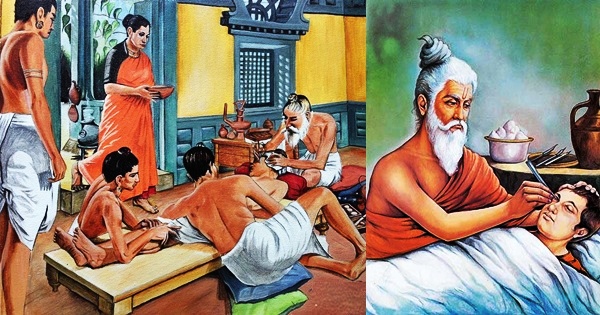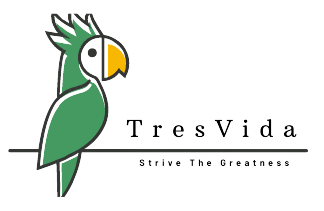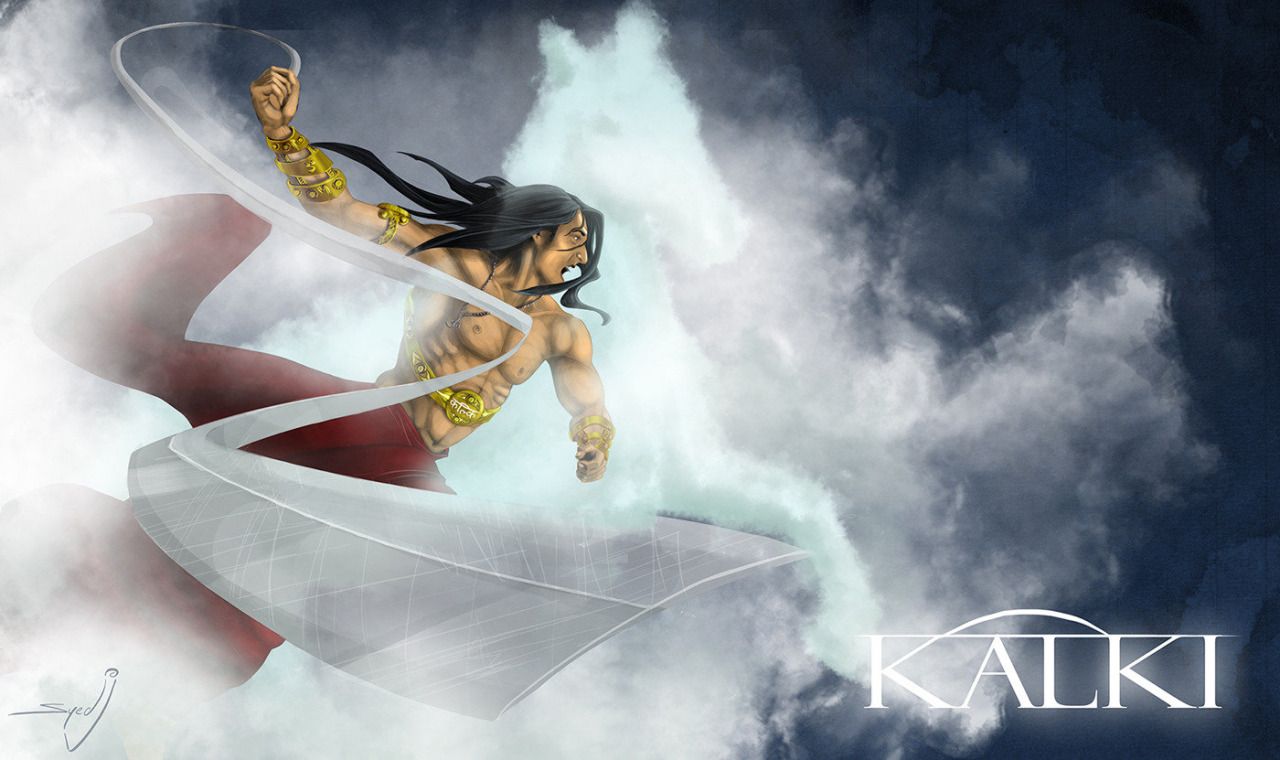Hindu scriptures, dating back thousands of years, are not just mythological texts; they are also treasure troves of knowledge on various subjects, including science, medicine, surgery, and technology. Many concepts that have become a reality today were already mentioned in these ancient texts, offering insights that seem ahead of their time. In this blog, we will explore various modern inventions like electricity, flying machines, and particularly medical science and surgery, and how they were conceptualized in Hindu scriptures like the Ramayana, Mahabharata, Vishnu Purana, and the Vedas.
Flying Machines (Vimanas)
One of the most compelling inventions mentioned in ancient Hindu texts is the Vimana, a flying machine described in several scriptures like the Ramayana and Mahabharata.
Ancient Reference:
In the Ramayana, the character Ravana is said to have used a flying chariot called Pushpaka Vimana to abduct Sita. The text describes it as a structure that could traverse large distances at incredible speeds. Similarly, in the Mahabharata, there are references to flying machines used by gods and warriors.
Modern Counterpart:
The concept of flying machines, now realized in the form of airplanes, helicopters, and drones, mirrors the descriptions of Vimanas. Early pioneers of aviation, such as the Wright brothers, created mechanical flying devices that changed the course of human transportation, yet the detailed descriptions of flying crafts were already mentioned in texts thousands of years ago.

Electricity and Energy Sources
The idea of harnessing energy for practical use is a pivotal aspect of modern science. From electricity to nuclear energy, today’s innovations could arguably find conceptual roots in ancient Hindu scriptures.
Ancient Reference:
In the Vishnu Purana and other Vedic texts, there are descriptions of cosmic energy sources and divine forces being harnessed for various purposes. The idea of Prana (life force) can be seen as a metaphysical form of energy that powers the universe and life. Similarly, Agni (fire) was considered a key element in various ceremonies and activities, representing energy transformation.
Modern Counterpart:
Electricity today powers the world in a way that might have been foreshadowed in Hindu texts. The concept of a universal energy that could be directed and controlled aligns with the modern understanding of electrical grids, power stations, and even wireless communication.

Weapons of Mass Destruction
In the Mahabharata, particularly during the Kurukshetra war, there are vivid descriptions of powerful weapons known as Astras, which have devastating effects much like modern nuclear weapons or missiles.
Ancient Reference:
The most famous of these weapons is the Brahmastra, a weapon said to have the power to destroy entire cities. Its description bears an eerie similarity to modern nuclear weapons, as it was known to produce massive destruction, radiation-like effects, and a long-lasting impact on the environment.
Modern Counterpart:
The parallel to this would be nuclear weapons, which were first used during World War II and have since become the ultimate symbol of destructive power. The effects of these weapons, such as radiation poisoning and mass-scale devastation, are strikingly similar to the ancient descriptions of the Brahmastra.

Time Travel and Relativity
Another fascinating concept that finds mention in Hindu scriptures is the relativity of time, which modern science explores through Einstein’s Theory of Relativity.
Ancient Reference:
In the Mahabharata, there is the story of King Kakudmi, who travels to meet Brahma in the higher realms. While the king spends only a few moments with Brahma, he returns to find that many ages have passed on Earth. This is a striking depiction of the idea of time dilation, where time moves differently based on the observer’s relative position or speed.
Modern Counterpart:
This is analogous to modern theories of time travel and relativity, where time moves differently in space compared to Earth. The concept of time dilation, where time slows down or speeds up based on gravity or velocity, is an essential part of space exploration today.

Medical Science and Surgery
Medical science, including surgery, has advanced exponentially in modern times, but the foundations of these practices can be traced back to ancient Hindu scriptures and practices. In fact, some of the earliest records of complex surgeries and medical knowledge come from ancient India.
Sushruta: The Father of Surgery
Sushruta, an ancient Indian physician and surgeon, authored the Sushruta Samhita, a Sanskrit text that is one of the earliest known medical treatises. Sushruta is often regarded as the “Father of Surgery” because of the detailed descriptions of surgical techniques, instruments, and procedures in his writings.
Ancient Reference:
The Sushruta Samhita contains references to over 300 different surgical procedures, including:
– Rhinoplasty (reconstruction of the nose)
– C-sections
– Cataract surgeries
– Amputations
– Use of anesthesia with herbs and plant-based medicine
One of the most famous procedures mentioned in the Sushruta Samhita is rhinoplasty (nose reconstruction), which was used to reconstruct damaged noses. This was a common practice in ancient India due to the frequent punishment of cutting off the nose.
Modern Counterpart:
Today, reconstructive surgeries and plastic surgery have evolved into sophisticated fields of medicine, but the principles laid down by Sushruta form the foundation. Techniques like rhinoplasty are now performed worldwide using modern technology, but the method’s origins trace back to ancient India.
Ayurveda: The Ancient System of Medicine
Ayurveda, another contribution from ancient India, is a holistic system of medicine that focuses on balancing the body’s elements to achieve health and well-being. The Charaka Samhita is one of the foundational texts of Ayurveda and details various treatments for diseases, the importance of diet, exercise, and the use of herbal medicine.
Ancient Reference:
The Charaka Samhita discusses:
– The concept of digestion and metabolism
– The classification of diseases and treatments
– Various medicinal herbs and their uses
– The importance of preventive medicine
Ayurveda also introduced the concept of panchakarma, a detoxification and cleansing process used to rid the body of toxins, which is still practiced in India and many parts of the world today.
Modern Counterpart:
Ayurveda has influenced modern holistic and alternative medicine practices worldwide. The use of herbal remedies, preventive care, and a focus on lifestyle and diet for disease prevention are principles that are now being embraced by modern medicine.
Plastic Surgery and Prosthetics
Ancient Indian texts also reference the creation of prosthetics and plastic surgery. The Vedas mention Dadhichi, a sage who gave up his bones to fashion a powerful weapon (Vajra) for the gods, which some interpret as an early reference to the use of body parts or artificial limbs in warfare.
Ancient Reference:
The story of Dadhichi could be seen as a metaphor for the use of body parts in surgeries, much like modern prosthetics. In Hindu mythology, gods and humans alike are described as being fitted with artificial limbs, showcasing an understanding of body modification and prosthetics.
Modern Counterpart:
Today, prosthetics have become highly advanced, using robotics and materials like carbon fibre to replicate the functions of limbs. The idea of reconstructing or replacing body parts is central to modern medicine, and its conceptual roots can be traced to ancient Hindu writings.

Concluding
Hindu scriptures like the Ramayana, Mahabharata, Vishnu Purana, and ancient texts like the Sushruta Samhita and Charaka Samhita offer a wealth of knowledge that seems to predate many modern inventions and discoveries. The ancient Hindu understanding of flying machines, energy sources, weapons of mass destruction, time travel, and particularly medical science and surgery, has profound implications for the history of human knowledge.
The descriptions of complex surgeries, the use of prosthetics, and holistic medicine practices like Ayurveda show that ancient India was far ahead of its time in understanding the human body and health. These insights remind us that science and spirituality have always been intertwined, and the quest for knowledge is as old as humanity itself.


